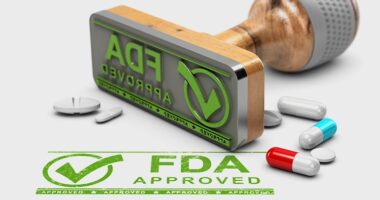Orphan Drugs: Too Niche for Commercial Success?
Orphan drugs accounted for nearly half of new molecular entities (NMEs) approved by the FDA in 2015. Is this a winning formula for the pharmaceutical industry or is it too niche to succeed?
One important measure of innovation in the pharmaceutical industry is the number of NMEs approved each year. Although 2015 was a banner year for NME approvals in the US with 45, a recent high, nearly half of the NMEs approved were for orphan drugs. DCAT Value Chain Insights (VCI) examines the commercial fortunes of orphan drugs.
Innovation in 2015
In calendar year 2015, FDA's Center for Drug Evaluation and Research (CDER) approved 45 novel drugs, approved as new molecular entities (NMEs) under new drug applications (NDAs) or as new therapeutic biologics under biologics license applications (BLAs). NMEs have chemical structures of active pharmaceutical ingredients that have never been approved before. From 2006 through 2014, CDER has averaged about 28 novel drug approvals per year. Although the number of NME approvals in 2015 far exceeded recent averages, the number of NME fillings in 2015 was on par with previous years. From 2006 through 2014, CDER filed an average of about 35 applications for novel drugs per year. CDER estimated 40 filings for 2015, which is consistent with previous years in this decade.
Of the 45 NMEs approved in 2015, the FDA identified that 16 of them or 36% as First-in-Class, one indicator of the innovative nature of a drug. These drugs often have mechanisms of action different from those of existing therapies. This First-in-Class approval rate is one factor that suggests the 2015 group of novel approvals is a field comprised of many innovative products. These First-in-Class drugs include:Sprout Pharmaceuticals’ Addyi (flibanserin) (Valeant Pharmaceuticals is acquiring Sprout Pharmaceuticals); Merck & Co. ‘s Bridion (sugammadex); Amgen's Corlanor (ivabradine), Novartis' Cosentyx (secukinumab); Bristol-Myers Squibb’s Daklinza (daclatasvir; Bristol-Myers Squibb’s Empliciti (elotuzumab); Novartis' Entresto (sacubitril/valsartan); Pfizer's Ibrance (palbociclib); Alexion Pharmaceuticals' Kanuma (sebelipase alfa); GlaxoSmithKline’s Nucala (mepolizumab); Vertex Pharmaceuticals’ Orkambi (lumacaftor and ivacaftor); Sanofi/Regeneron Pharmaceuticals’ Praluent (alirocumab) Boehringer Ingelheim’s Praxbind (idarucizumab); Alexion Pharmaceuticals’ Strensiq (asfotase alfa); United Therapeutics' Unituxin (dinutuximab); and Wellstat Therapeutics’ Xuriden (uridine triacetate).
About 47% of the novel drugs approved in 2015 (21 of 45) were approved to treat rare or “orphan” diseases that affect 200,000 or fewer Americans. Table I outlines the orphan drugs approved in 2015. In 2014, 41% of the NMEs approved were for rare diseases, accounting for 17 of the 41 NMEs approved in 2014.
| Table I: 2015 New Molecular Entities (New Drug Applications (NDAs) and Original Biologics License Applications (BLAs) Approved by the US Food and Drug Administration's Center for Drug Evaluation and Research as Orphan Drugs. | ||
| Company | Property name (active ingredient); application type; | Indication |
| Actelion Pharmaceuticals | Uptravi (selexipag); NDA | Pulmonary arterial hypertension |
| Alexion Pharmaceuticals | Strensiq (asfotase alfa); BLA | Perinatal, infantile, and juvenile-onset hypophosphatasia |
| Alexion Pharmaceuticals | Kanuma (sebelipase alfa); BLA | Lysosomal acid lipase deficiency |
| Amgen | Repatha (evolocumab); BLA | For some patients who are unable to get their low-density lipoprotein (LDL) cholesterol under control with current treatment options |
| Asklepion Pharmaceuticals/Retrophin | Cholbam (cholic acid); NDA | Pediatric and adult patients with bile acid synthesis disorders due to single enzyme defects and for patients with peroxisomal disorders |
| Astellas Pharma | Cresemba (isavuconazonium; NDA | Invasive aspergillosis and invasive mucormycosis |
| AstraZeneca | Tagrisso (osimertinib); NDA | Advanced non-small cell lung cancer in patients whose tumors have a specific epidermal growth factor receptor (EGFR) mutation (T790M) and whose disease has gotten worse after treatment with other EGFR-blocking therapy |
| Boehringer Ingelheim | Praxbind (idarucizumab); BLA | In patients who are taking the anticoagulant Pradaxa (dabigatran) during emergency situations when there is a need to reverse Pradaxa's blood-thinning effects. |
| Bristol-Myers Squibb | Empliciti (elotuzumab); BLA | In combination with two other therapies to treat people with multiple myeloma who have received one to three prior medications |
| Eisai | Lenvima (lenvatinib); NDA; orphan drug | Progressive, differentiated thyroid cancer whose disease progressed despite receiving radioactive iodine therapy |
| Eli Lilly and Company | Portrazza (necitumumab); BLA | In combination with two forms of chemotherapy to treat patients with advanced (metastatic) squamous non-small cell lung cancer who have not previously received medication specifically for treating their advanced lung cancer |
| Johnson & Johnson (Janssen Biotech) | Darzalex (daratumumab); BLA | To treat patients with multiple myeloma who have received at least three prior treatments |
| Johnson & Johnson (Janssen Products) | Yondelis (trabectedin); NDA | Specific soft tissue sarcomas, liposarcoma and leiomyosarcoma, that cannot be removed by surgery or is advanced |
| Novartis | Farydak (panobinostat); NDA; orphan drug | Multiple myeloma |
| NPS Pharmaceuticals/Shire | Natpara (parathyroid horomone); BLA | Control hypocalcemia (low blood calcium levels) in patients with hypoparathyroidism |
| Roche/Genentech | Cotellic (cobimetinib); NDA | In combination with vemurafenib to treat advanced melanoma that has spread to other parts of the body or can't be removed by surgery, and that has a certain type of abnormal gene (BRAF V600E or V600K mutation) |
| Roche/Genentech | Alecensa (alectinib); NDA | Advanced ALK-positive non-small cell lung cancer |
| Takeda Pharmaceuticals | Ninlaro (ixazomib); NDA | In combination with two other therapies to treat people with multiple myeloma who have received at least one prior therapy. |
| United Therapeutics | Unituxin (dinutuximab); BLA; | First-line therapy for pediatric patients with high-risk neuroblastoma |
| Vertex Pharmaceuticals | Orkambi (lumacaftor and ivacaftor); NDA | Cystic fibrosis in patients who have two copies of a specific mutation |
| Wellstat Therapeutics | Xuriden (uridine triacetate); NDA | Hereditary orotic aciduria, a rare metabolic disorder |
|
Retrophin agreed to acquire Chobalm from Asklepion Pharmaceuticals in January 2015 and exercised a purchase agreement in March 2015. |
||
Finding the niche
So what is behind the uptick in orphan drug approvals and what does it mean from a commercial basis. The passage of the Orphan Drug Act of 1983 in the United States provided a mechanism to facilitate the development and commercialization of orphan drugs. FDA's Orphan Drug Designation program provides orphan status to drugs and biologics that are defined as those intended for the safe and effective treatment, diagnosis, or prevention of rare diseases/disorders that affect fewer than 200,000 people in the US, or that affect more than 200,000 persons but are not expected to recover the costs of developing and marketing a treatment drug. Between 1983 and 2013, the FDA approved more than 450 drugs and biologic products for rare diseases. In the decade prior to the Orphan Drug Act, fewer than 10 treatments had been developed by industry for rare diseases, according to the FDA.
Perhaps the best known example of a company developing and commercializing orphan drugs is Genzyme, now part of Sanofi. Its first such product, Cerezyme (imiglucerase for injection), which is indicated for long-term enzyme replacement therapy for pediatric and adult patients with a confirmed diagnosis of Type 1 Gaucher disease, was launched in 1994 and other products followed. Fabrazyme (ceramide trihexosidase/alpha-galactosidase) to treat Fabry disease was launched in Europe in 2001 and soon expanded to the US and other regions. Aldurazyme (laronidase) used to treat patients with the Hurler and Hurler-Scheie forms of mucopolysaccharidosis I (MPS I), came to market in 2003. In 2006, Myozyme (recombinant human acid alpha-glucosidase) was approved in the US to treat infantile Pompe disease and all Pompe patients in Europe and other regions. And Lumizyme (recombinant human acid alpha-glucosidase) was approved in the US in 2009 specifically to treat late-onset Pompe disease.
Orphan drugs represent a niche opportunity in the global pharmaceutical market but a potentially strong commercial prospect relative to non-orphan drugs. The global market for orphan drugs was valued at $82.6 billion in 2011 and nearly $86 billion in 2012, according to BCC Research, a Norwalk, Connecticut market research firm. BCC projects that the global market will reach $112 billion in 2017, after increasing at a five-year compound annual growth rate (CAGR) of 5.4%. A 2015 analysis by Evaluate Pharma projects that worldwide orphan drug sales forecast to total $178 billion by 2020 with a compound annual growth rate (CAGR) of 11.7% from 2015 to 2020, almost double overall prescription market growth (excluding generics). The firm projects that orphan drugs are set to be 20.2% of worldwide prescription sales by 2020 (excluding generics), compared to only 6.3% in 2000. A recent analysis by the IMS Institute for Healthcare Informatics projects that during the next five years, an additional 75 new orphan drugs are expected to be available for various therapeutic areas that currently have limited or no treatment options.
An analysis by Thomson Reuters pointed to a CAGR of the orphan drug market between 2001 and 2010 of 25.8%, compared to only 20.1% for a matched control group of non-orphan drugs. The report noted that that despite the smaller patient pool for rare disease R&D, the economics of orphan drug development and potential for commercialization are attractive when compared to their nonorphan counterparts. It points to economic drivers such as tax credits, grants, waived FDA fees, reduced timelines for clinical development and higher probability of regulatory approval, coupled with commercial drivers such as premium pricing, faster uptake, lower marketing costs and longer market exclusivity as favorable indicators for orphan drug development.






